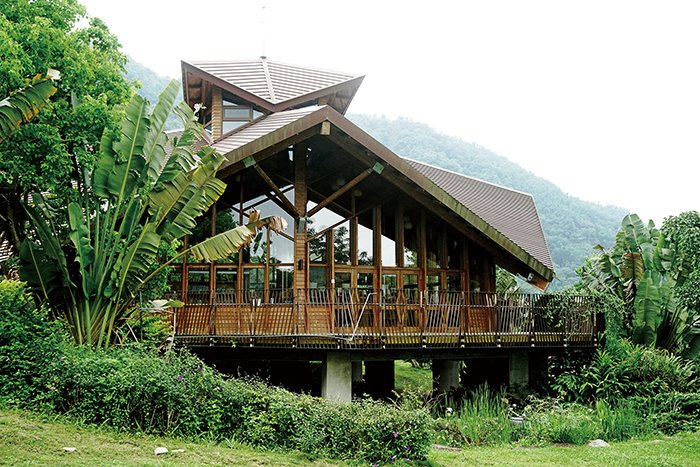One of Namasia District's most famous scenic attractions, Dragon Phoenix Waterfall, was utterly destroyed during 2009's devastating Typhoon Morakot (an event also called the "Eight-Eight Flood Disaster," because the typhoon arrived in Taiwan on August 8). However, nature is surprising and resilient. A natural waterfall later formed behind Minsheng Elementary School, and it has been called "Eight-Eight Waterfall."
 During the 1895-1945 period of Japanese rule, the colonial authorities founded two Shinto shrines in Namasia, one being the Dakanuwa Shrine. Elsewhere in Namasia, they established schools, offices, police stations, and other public facilities. The Japanese tended to choose elevated locations for their shrines, so they were seldom flooded when typhoons brought torrential rains. At the entrance to the stone steps leading to the shrine, there once stood a red torii gate. The stone steps that were laid by members of the local Bunun people can still be clearly seen today, and they serve to remind us of the arduous lives of Taiwan's indigenous people. Relics including sarcophagi, sanctuaries, and pedestals of the temple remain intact. These relics deserve special care and attention, because they embody the memories of many people.
Of the various reconstruction projects initiated after Typhoon Morakot, Min Cyuan Elementary School is regarded as one of the most successful. It is also as an icon of green architecture. Construction of this stilt-house, indigenous-style campus was sponsored by Delta Electronics Foundation. The school doubles as a typhoon shelter for local residents. The school is eco-friendly in that its footprint has minimal impact on the environment, while it is powered by renewable solar energy.  The school also serves as a nature classroom. Students can explore the beauty of nature through the various species planted on the campus, such as cherry blossoms and plum blossoms. The school is shaped like a Datura flower, while the Sun Plaza was constructed using driftwood left behind by the typhoon. The sculptures on the terrace depict Bunun mythology. Pestle-and-mortar and millet motifs, along with Bunun totems, can be seen around the water tank. The school also serves as a nature classroom. Students can explore the beauty of nature through the various species planted on the campus, such as cherry blossoms and plum blossoms. The school is shaped like a Datura flower, while the Sun Plaza was constructed using driftwood left behind by the typhoon. The sculptures on the terrace depict Bunun mythology. Pestle-and-mortar and millet motifs, along with Bunun totems, can be seen around the water tank. |


沒有留言:
張貼留言